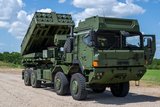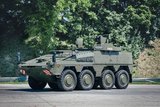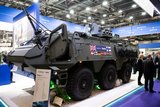Pearson Engineering delivers countermine technology trials to the British Army
Pearson Engineering announced the first trial for its Threat-Sense technology. (Photo: Pearson Engineering)
UK firm Pearson Engineering on 1 November announced the first trial for its Threat-Sense landmine-detection technology.
Working alongside the Royal Engineers Trials and Development Unit (RETDU), which devised the in-depth programme, the technology was tested against FASCAM scatterable mines.
Matt Aujla, business development manager at Pearson, noted that RETDU engaged with the company 'as a result of the Army prior information notice, published earlier this year.'.
He added: 'It is very important to our product development programme that we get end-user feedback from concept demonstrations such as these to ensure that the product matures, whilst meeting the practical needs of any end-user on operations.'
Pearson released the Threat-Sense capability in February 2021 alongside its sister technology, Threat Pathway, using AI to identify surface-laid threats.
The fully passive technology can analyse video streams in real-time from visual and thermal cameras mounted on the vehicles simultaneously.
Threat-Sense was tested on a Terrier Engineering Vehicle and a standard Land Rover vehicle during the trials with RETDU.
Related Equipment in Defence Insight
More from Land Warfare
-
![Lockheed Martin to look further afield for GMARS rocket system opportunities]()
Lockheed Martin to look further afield for GMARS rocket system opportunities
The HX truck is already in use in many NATO and allied countries around the world as a logistics vehicle and carrier for high-value systems, including missile firing weapons, so its use for the Global Mobile Artillery Rocket System makes logistical sense.
-
![Beyond Survivability: How Active Protection Systems Are Empowering Commanders (Podcast)]()
Beyond Survivability: How Active Protection Systems Are Empowering Commanders (Podcast)
As threats diversify and intensify, APS are proving essential not just for vehicle protection but also for enhancing operational freedom, effectiveness and mission success in contested environments.
-
Medium knocked out of British Army LMP, with CAVS as heavyweight champion
As the British Army seeks to modernise and consolidate its diverse vehicle fleet, yet another change in direction is underway.






















